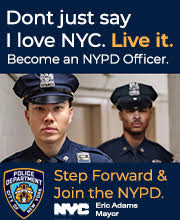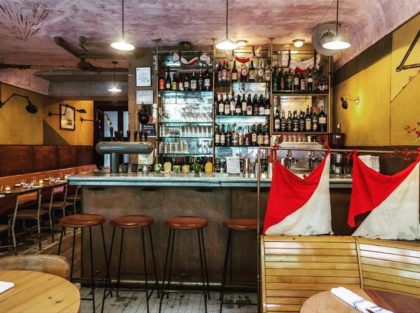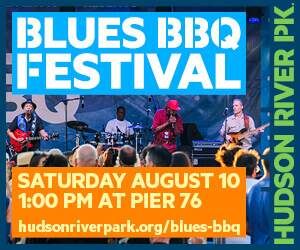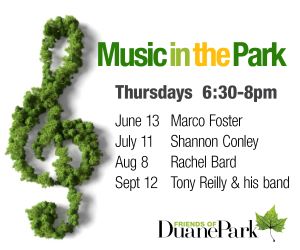Categories
Left column house ads
In the News: More on the Jewelry Store Death
February 17, 2017 Community News, Crime, Restaurant/Bar News, Shopping
••• More on the death of Omid Gholian in the New York Daily News: “Cops found no evidence that the store was ransacked and could not tell whether any of the pricey jewelry usually bought and sold there had been taken, police sources said. Investigators believe he was strangled, but an autopsy conducted Thursday was inconclusive and required further study, a spokeswoman for the city medical examiner’s office said.”
••• And from NBC New York: “People who knew Gholian say an employee of the jewelry store is also missing.”
••• Christy Frank of Frankly Wines joins the New York Times wine panel for a tasting of Sonoma Cost pinot noirs.
••• Tribeca Trib talks with NYPD officer Theodore Plevritis, who convinced a man not to kill himself.
••• “A host of Downtown pols fired off a letter to the city’s top transit official calling for a comprehensive traffic study of Lower Manhattan’s medieval street grid.” —Downtown Express
••• Navy restaurant in Soho is closing. “Akiva Elstein and […] Matt Abramcyk are looking reopen the restaurant Downtown because they were never able to secure a full liquor license.” —Eater
2 Comments
Subscribe
Subscribe to the TC Newsletter
















Do these “Downtown pols” really need another study to find ways to improve traffic here?
“SECURITY” THEATER
* After 9/11 to “protect” One Police Plaza, the City shut Park Row and access to many of the surrounding streets, rather than move Police Headquarters to a more defensible location. (Then again, after the first attack on the WTC in the 1990s, local politicians decided it would be smart to locate the Office of Emergency Management’s multimillion emergency command bunker on the 23rd floor of World Trade Center Building 7, a not unlikely future terrorist target.)
* The City and State allowed security to prevent the unfettered reconnection of Greenwich and Fulton Streets to the street grid, effectively maintaining the disastrous WTC superblock.
SQUANDERED TRANSIT FUNDS
* Politicians spent 4 billion dollars on a literal white elephant that could be about the least cost-effective way to improve transportation.
* The rail tunnel to New Jersey that was cancelled for reasons of cost would have eliminated lots of cars and some buses (that clog city streets rather than stopping at the overburdened Port Authority terminal) coming into the City.
According to Streetsblog:
“In October 2012, the most recent month for which Hub Bound data is available, buses were 10.8 percent of all eastbound traffic in the Lincoln Tunnel, according to the Port Authority. But on an average weekday that month, buses carried 73.4 percent of all people traveling through the tunnel, according to the Hub Bound report. Put another way: Nearly three-quarters of people in the Lincoln Tunnel are traveling in about one-tenth of the vehicles.
“Or: Nearly 90 percent of vehicles clogging the tunnel are carrying slightly more than one-quarter of the people.
The bus numbers aren’t as lopsided for the Holland Tunnel, which has no dedicated bus lanes, but the efficiency of transit is still apparent: Buses are only 1.5 percent of the vehicles, yet manage to carry 26.5 percent of all people using the downtown crossing.”
THE POLITICAL WILL MEETS THE POLITICAL WON’T
Politicians continue to encourage the least efficient mode of transportation — the single-occupant car — in other ways.
* Why do downtown politicians tolerate the use of Canal Street as an interstate freeway going from a bridge to a tunnel? One in five drivers entering the busiest parts of Manhattan are only passing through, on their way elsewhere. They are not the constituents of the downtown politicians, either.
* Despite the availability of technology to collect tolls without tollbooths on the Verrazano Bridge and elsewhere, politicians continue to allow the cost-free use of Manhattan streets. Over half the car drivers commuting to Manhattan live elsewhere in the 5 boroughs, not in New Jersey or Long Island or Westchester or upstate. What do our downtown politicians think of that? (Apparently central London’s congestion charge raises hundreds of millions of dollars annually to improve public transit, reduced overall traffic 10%, reduced cars entering by one-third, and increasing bike ridership by 30%.)
* On-street parking is either free at the vast majority of on-street spots or heavily subsidized at meters when compared to the price in lots and garages. That 50%+ share of all the drivers commuting into Manhattan have parking options subsidized by NYC both in Manhattan and where they park their cars at home. Cheap parking at home or at work means more cars.
* The City and State continues to provide parking placards for over 100,000 government employees. Free parking means that workers in no NYC industry drive to work in greater proportion than government workers, many of whom work for agencies located in downtown Manhattan. Would you be surprised if 25% of the available street parking downtown were occupied by placard holders? With little fear of enforcement, those placard holders do not always park in a legal parking space, either, and that hinders traffic also.
* There is essentially zero enforcement of laws against the fraudulent use of phony parking placards or “union-issued” parking placards. (Not to mention the absence of enforcement of laws against intersection blocking and double parking, which large companies can prepay at discounted rates.) Other cities control street parking by a system of parking permits available to local area residents only who register their cars in the neighborhood (and not at their second homes to obtain lower auto insurance rates).
* Of the 31,000 vehicles in the NYC government fleet, only 8,000 are designated “critical,” i.e., Corrections buses, Street and parking meter repair, garbage collection trucks and sweepers, FDNY ambulances, ladders, and pumpers, etc. How many of those other 23,000 vehicles are “take-home” vehicles used for commuting by government employees?
http://www.crainsnewyork.com/article/20170206/TRANSPORTATION/170209944/locals-registering-their-cars-in-other-states-could-be-cheating-new-york-out-of-millions
“There are an estimated 25% of NYC drivers with cars registered out of state
The reported cost to the city in unpaid parking tickets by those drivers is $73 million […] The state Department of Financial Services estimates that people who live in New York but register their car out of state cost insurers $19 million each year in underpriced premiums.”